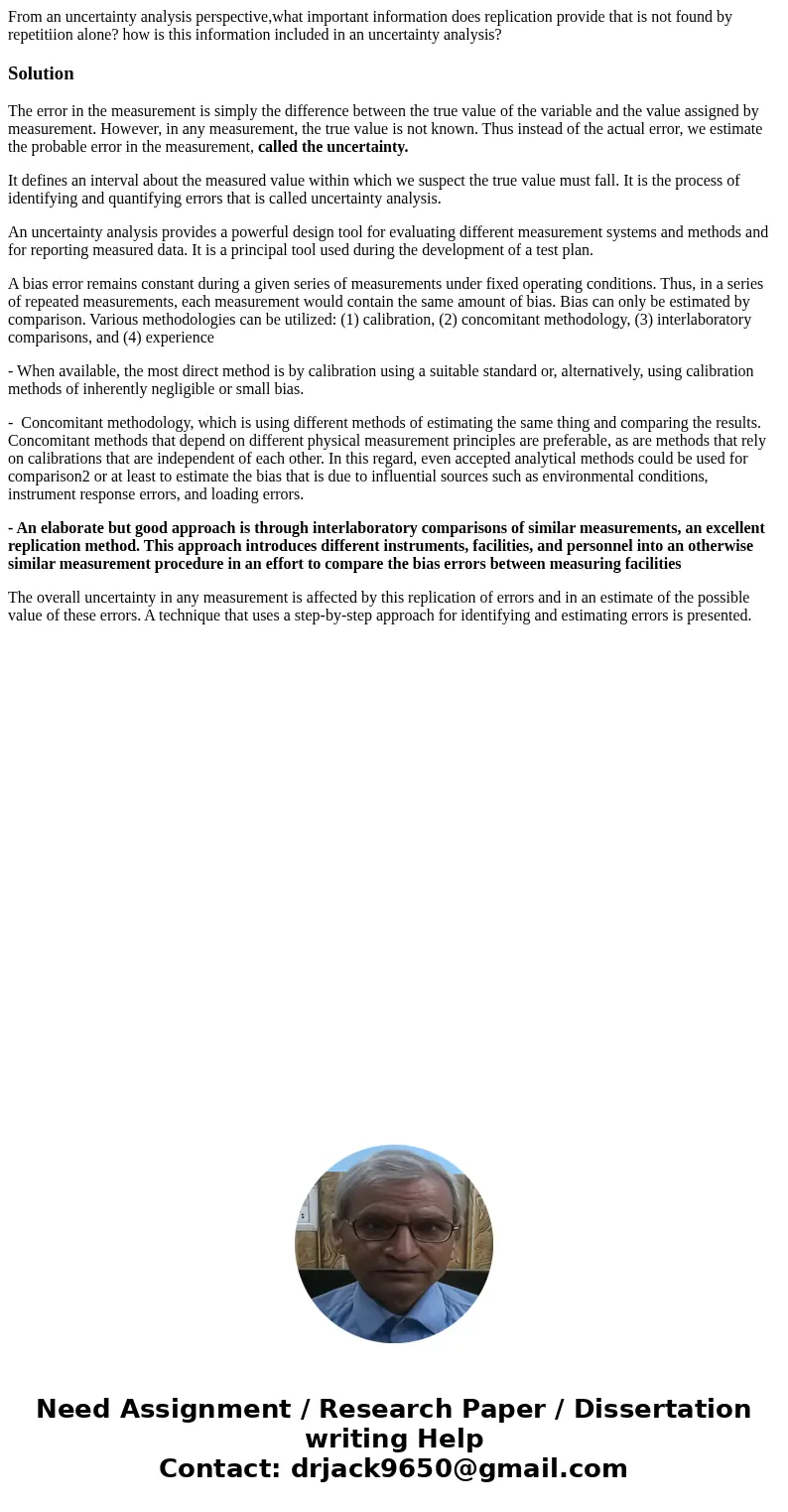From an uncertainty analysis perspectivewhat important infor
From an uncertainty analysis perspective,what important information does replication provide that is not found by repetitiion alone? how is this information included in an uncertainty analysis?
Solution
The error in the measurement is simply the difference between the true value of the variable and the value assigned by measurement. However, in any measurement, the true value is not known. Thus instead of the actual error, we estimate the probable error in the measurement, called the uncertainty.
It defines an interval about the measured value within which we suspect the true value must fall. It is the process of identifying and quantifying errors that is called uncertainty analysis.
An uncertainty analysis provides a powerful design tool for evaluating different measurement systems and methods and for reporting measured data. It is a principal tool used during the development of a test plan.
A bias error remains constant during a given series of measurements under fixed operating conditions. Thus, in a series of repeated measurements, each measurement would contain the same amount of bias. Bias can only be estimated by comparison. Various methodologies can be utilized: (1) calibration, (2) concomitant methodology, (3) interlaboratory comparisons, and (4) experience
- When available, the most direct method is by calibration using a suitable standard or, alternatively, using calibration methods of inherently negligible or small bias.
- Concomitant methodology, which is using different methods of estimating the same thing and comparing the results. Concomitant methods that depend on different physical measurement principles are preferable, as are methods that rely on calibrations that are independent of each other. In this regard, even accepted analytical methods could be used for comparison2 or at least to estimate the bias that is due to influential sources such as environmental conditions, instrument response errors, and loading errors.
- An elaborate but good approach is through interlaboratory comparisons of similar measurements, an excellent replication method. This approach introduces different instruments, facilities, and personnel into an otherwise similar measurement procedure in an effort to compare the bias errors between measuring facilities
The overall uncertainty in any measurement is affected by this replication of errors and in an estimate of the possible value of these errors. A technique that uses a step-by-step approach for identifying and estimating errors is presented.

 Homework Sourse
Homework Sourse